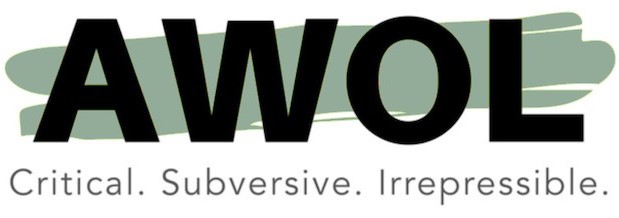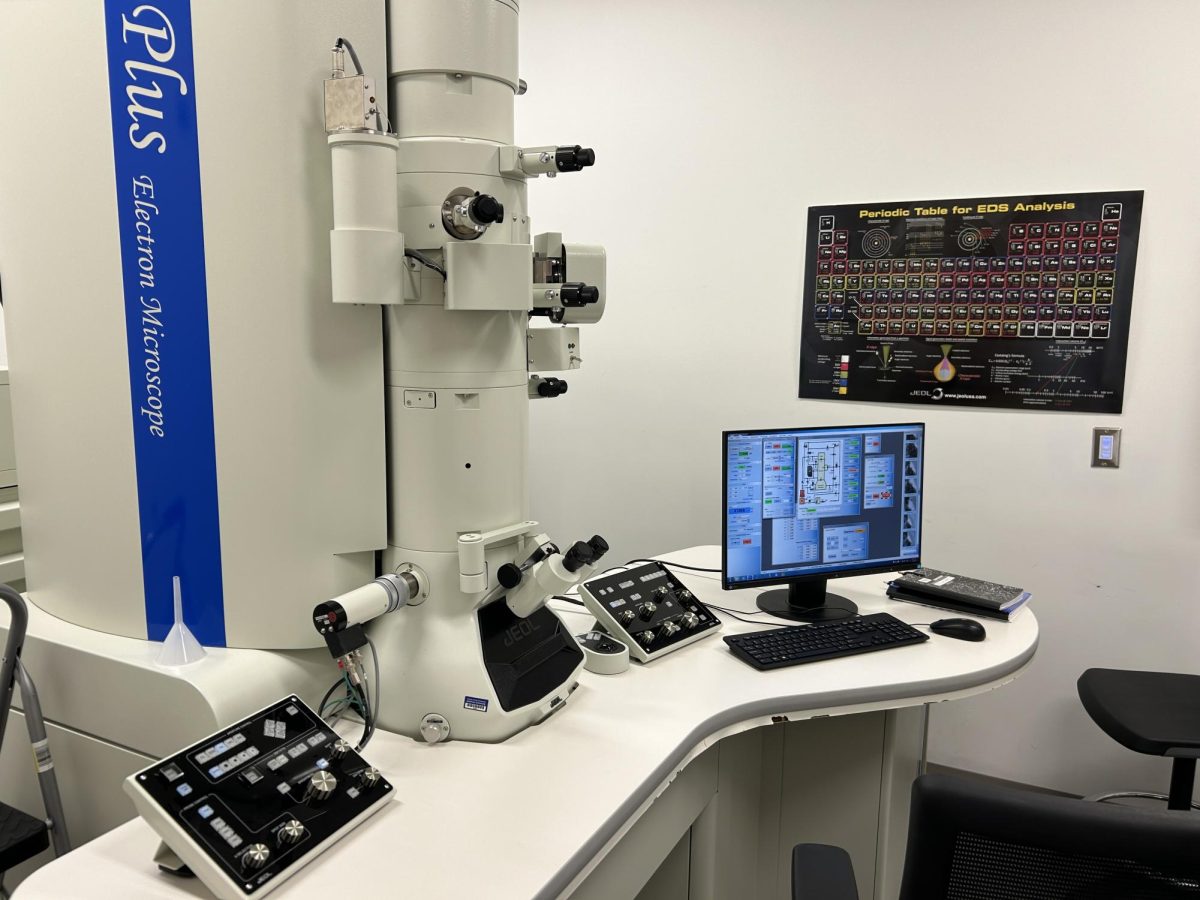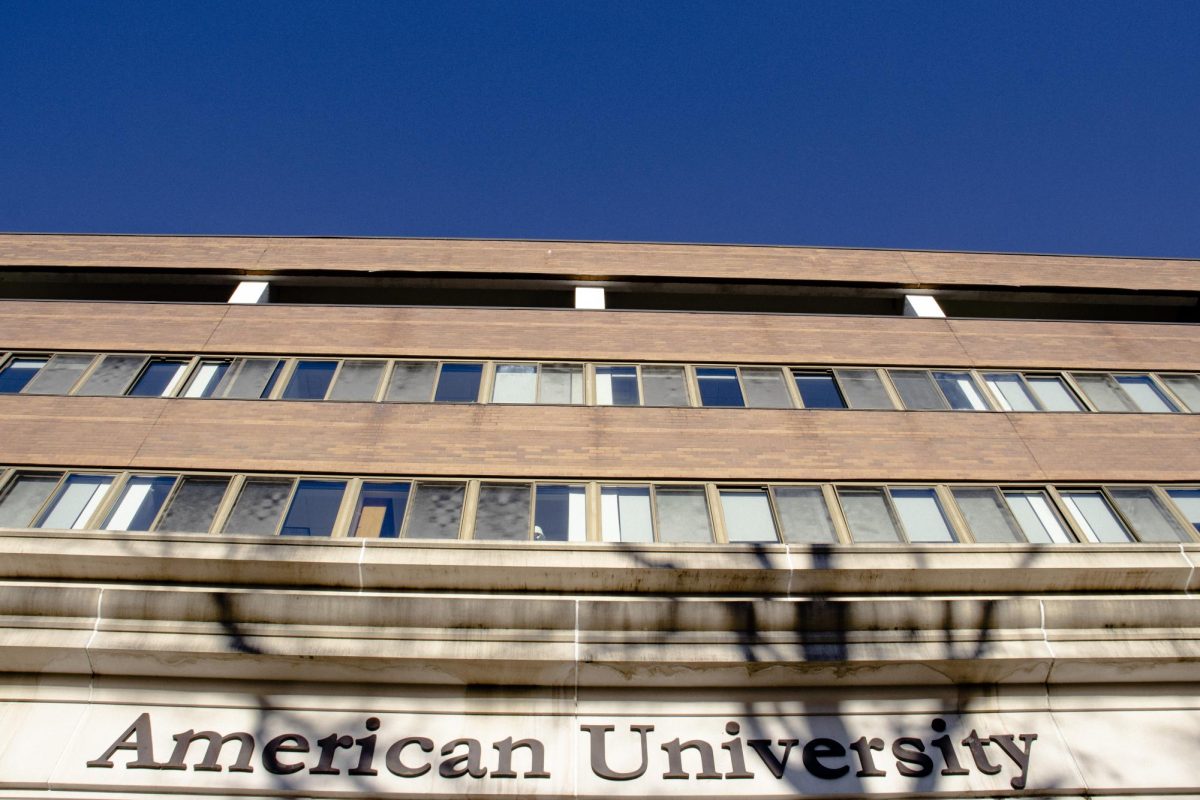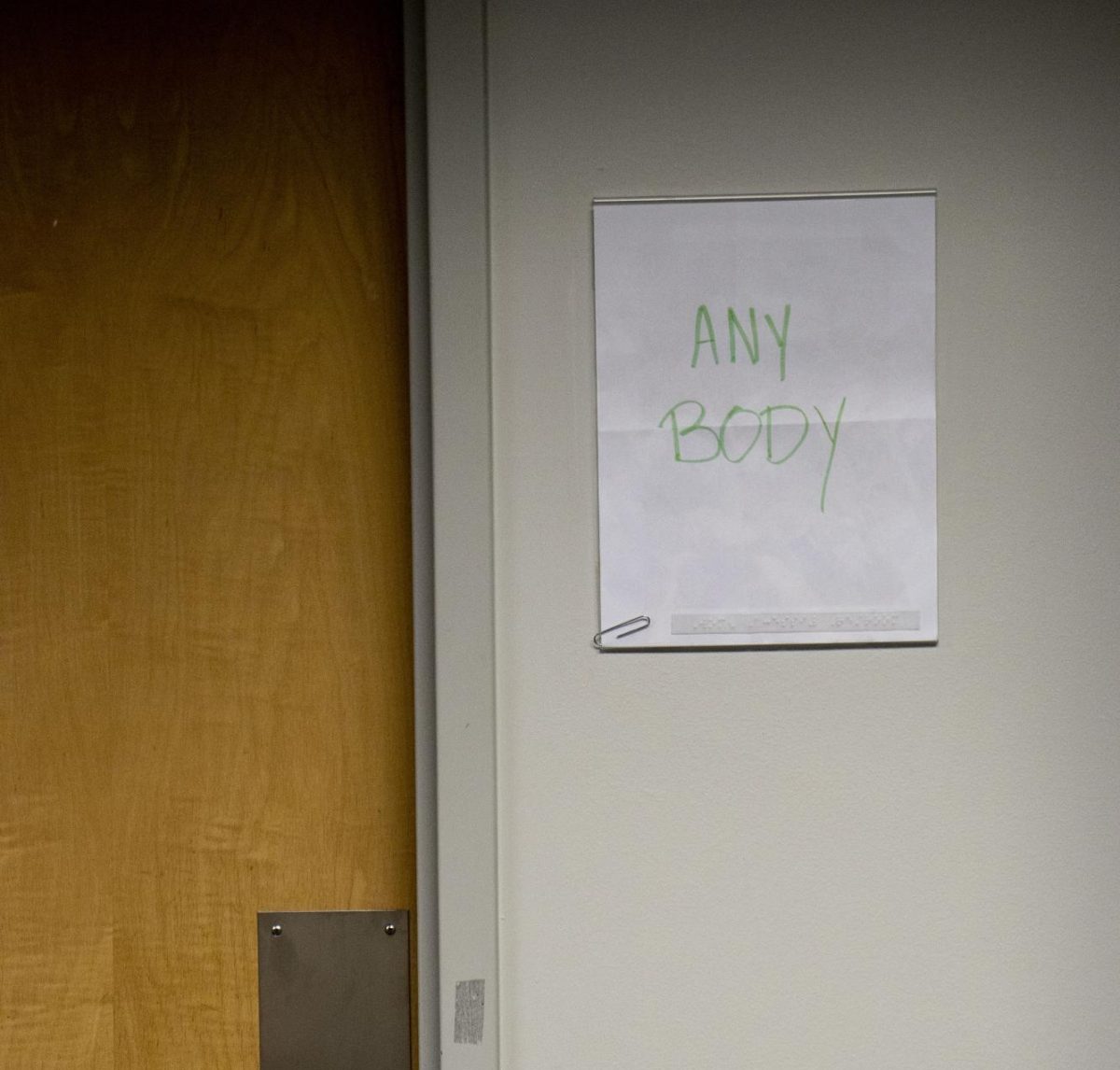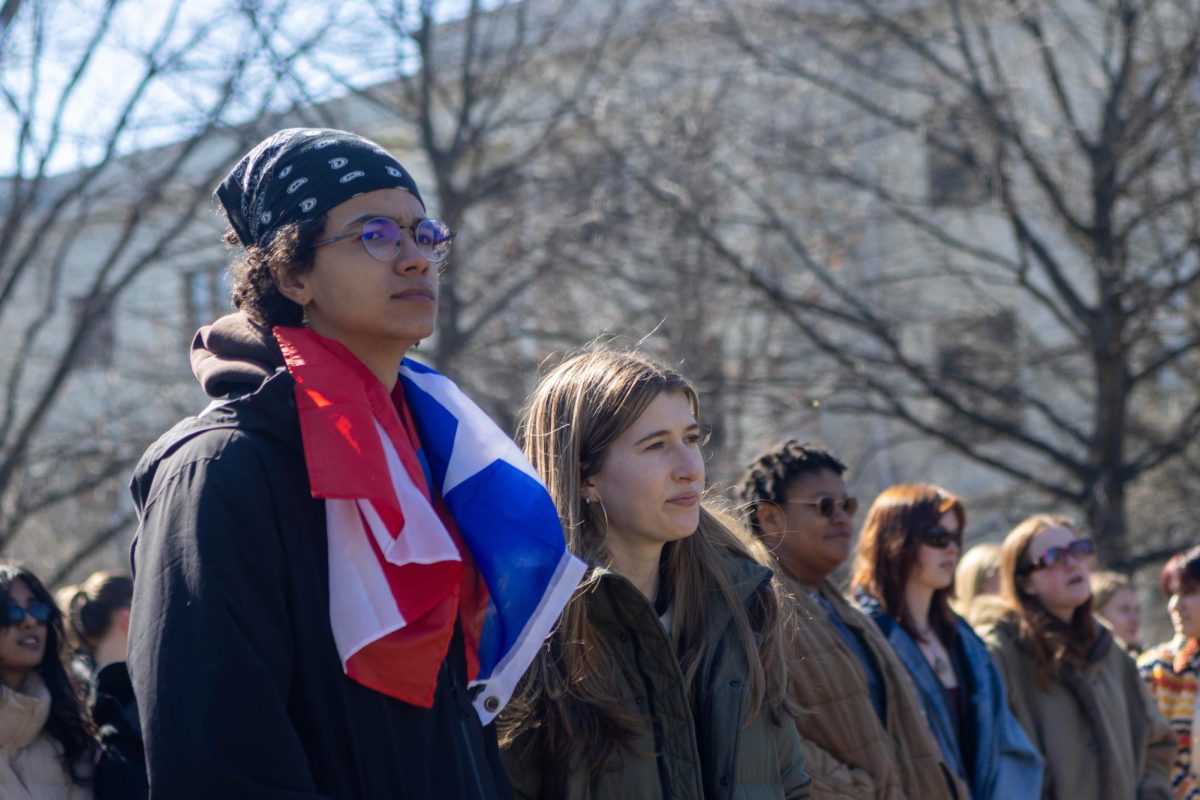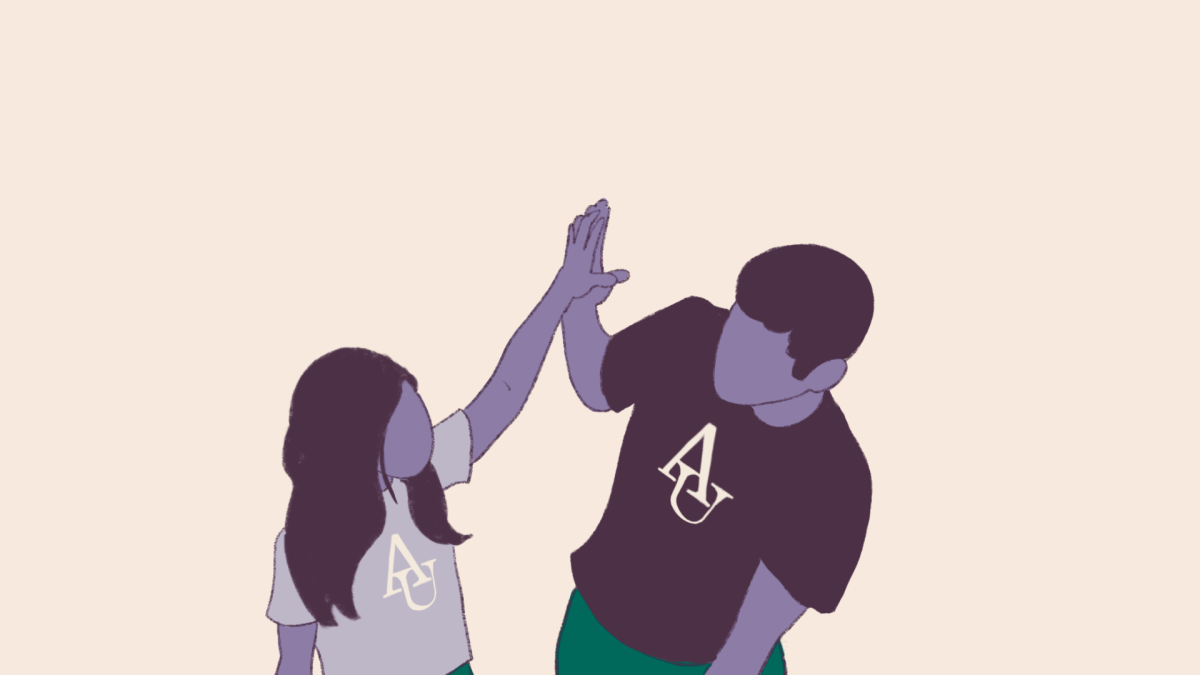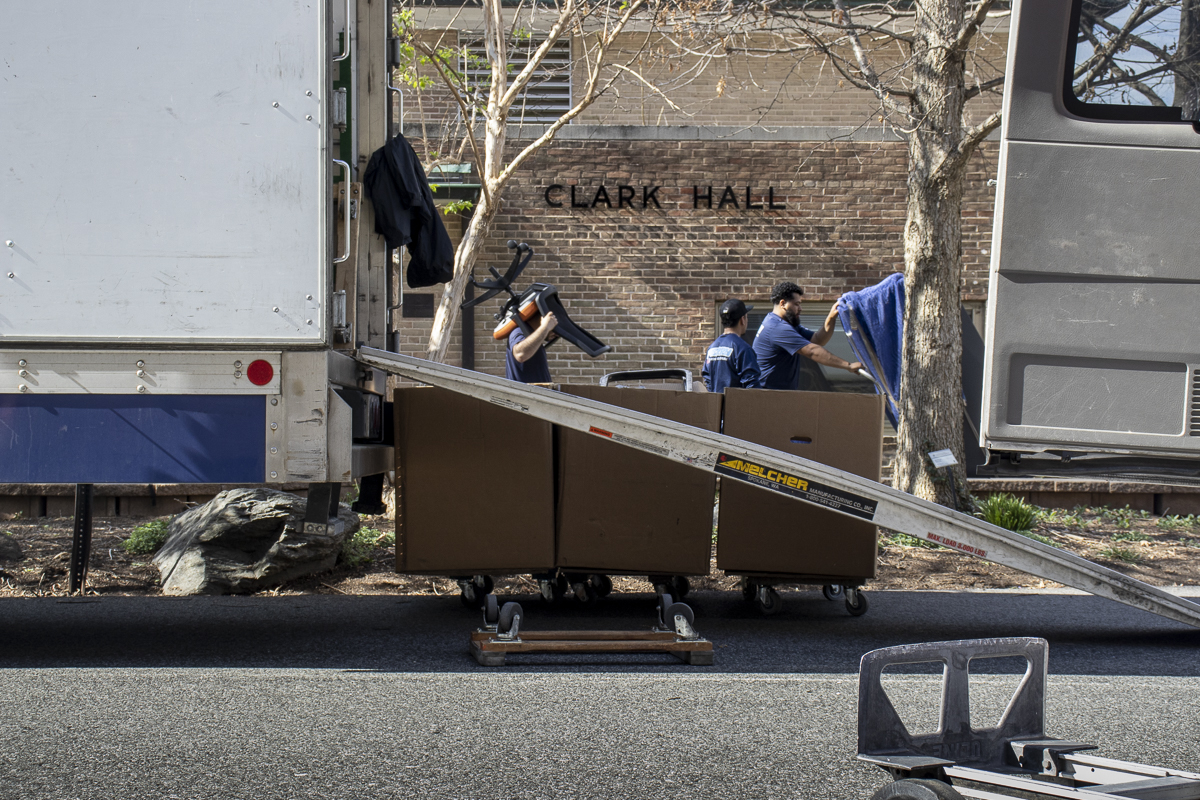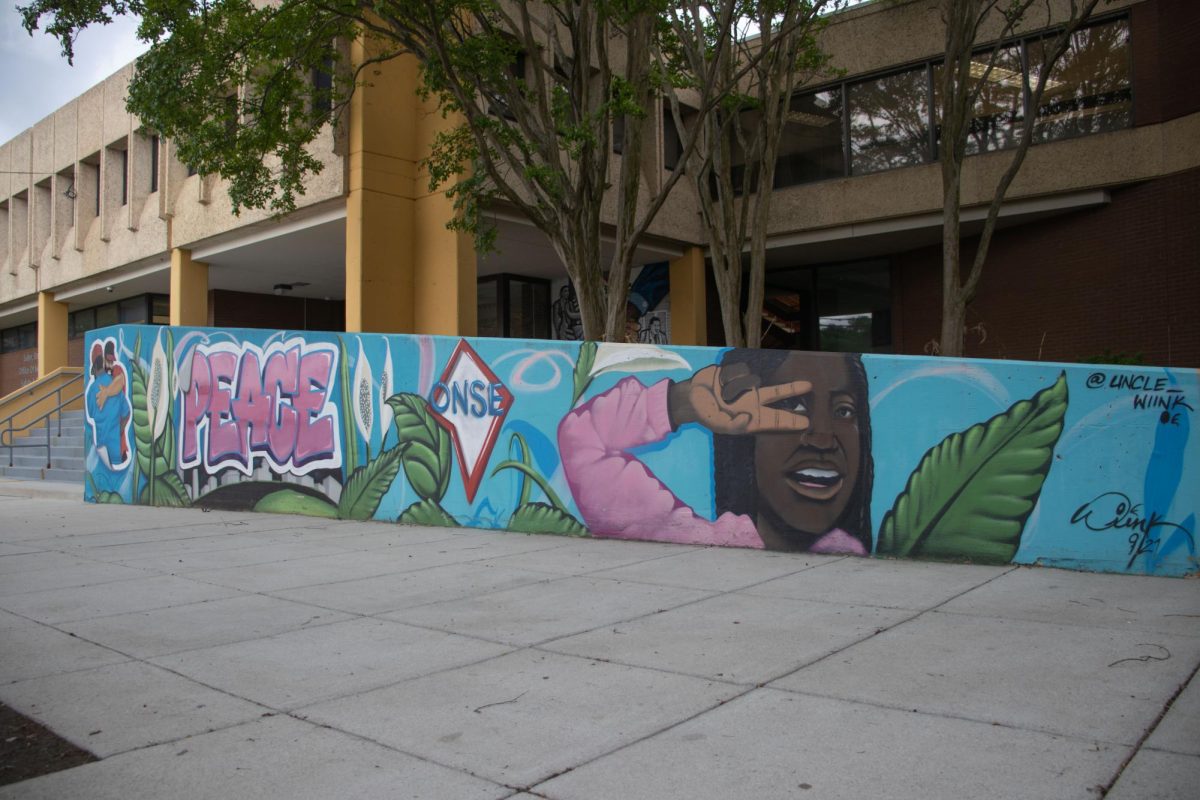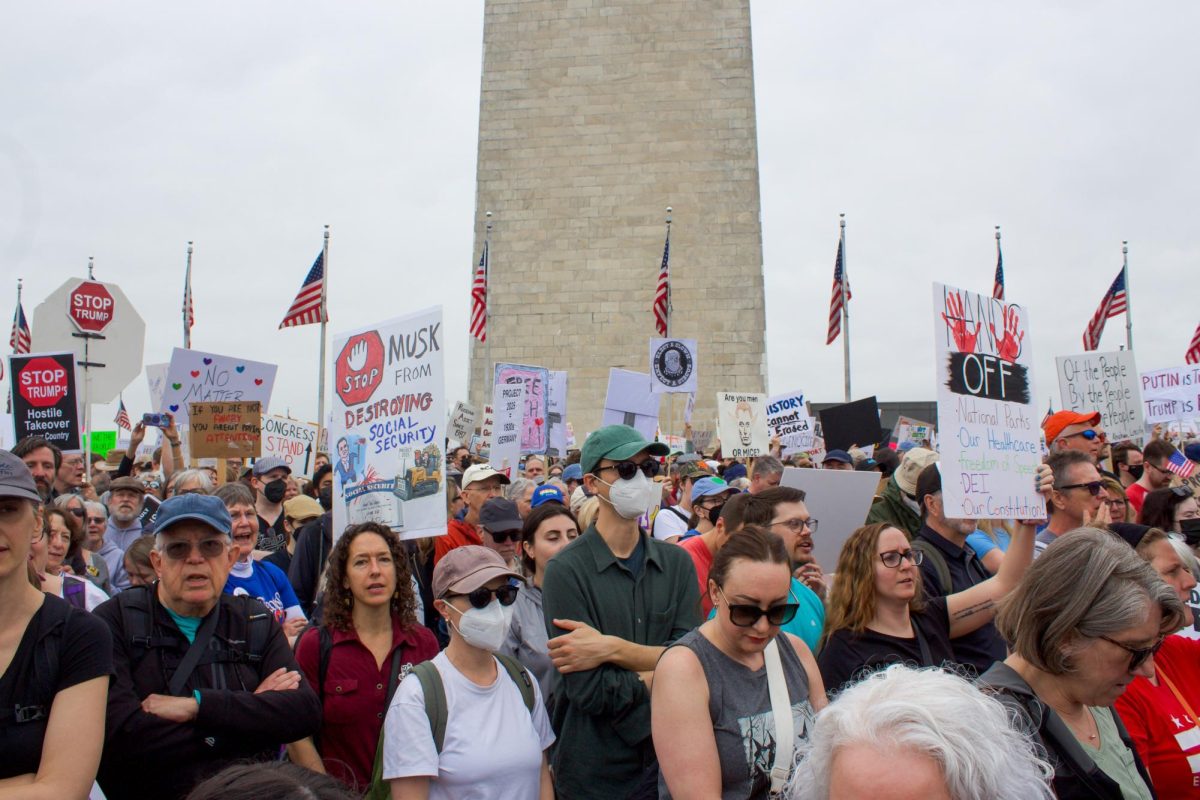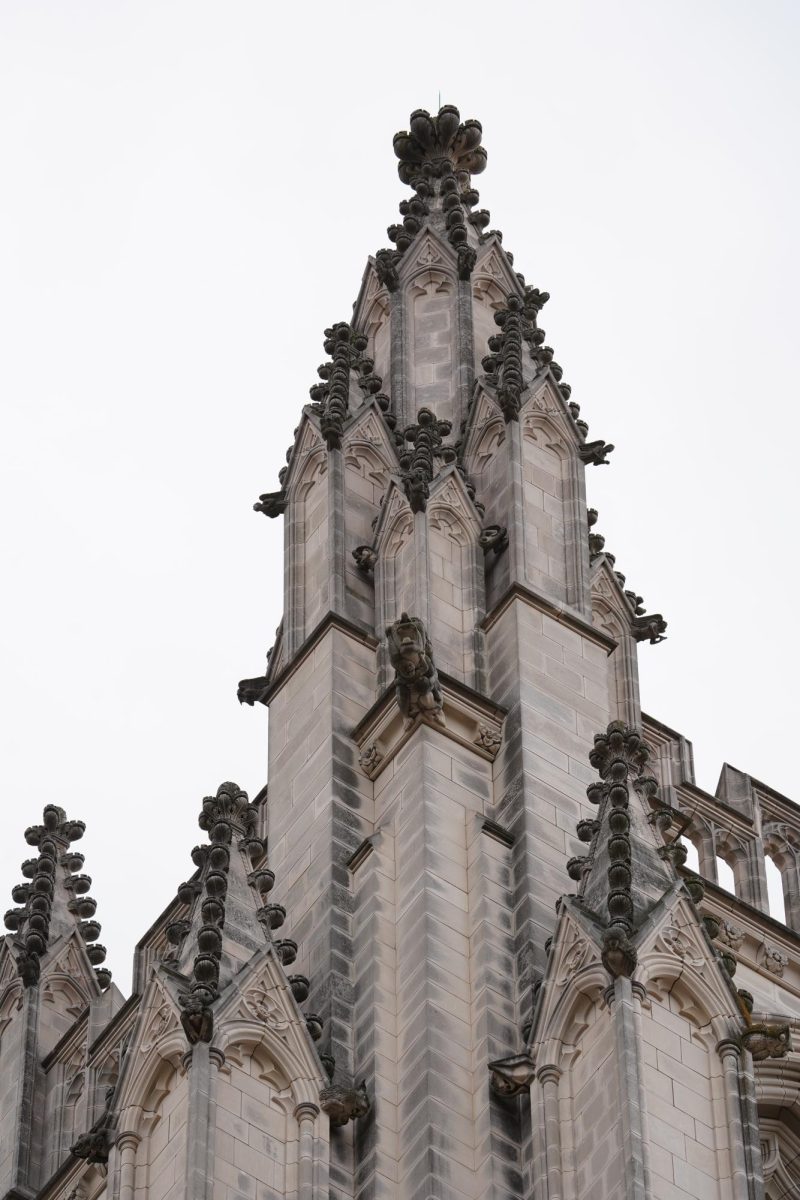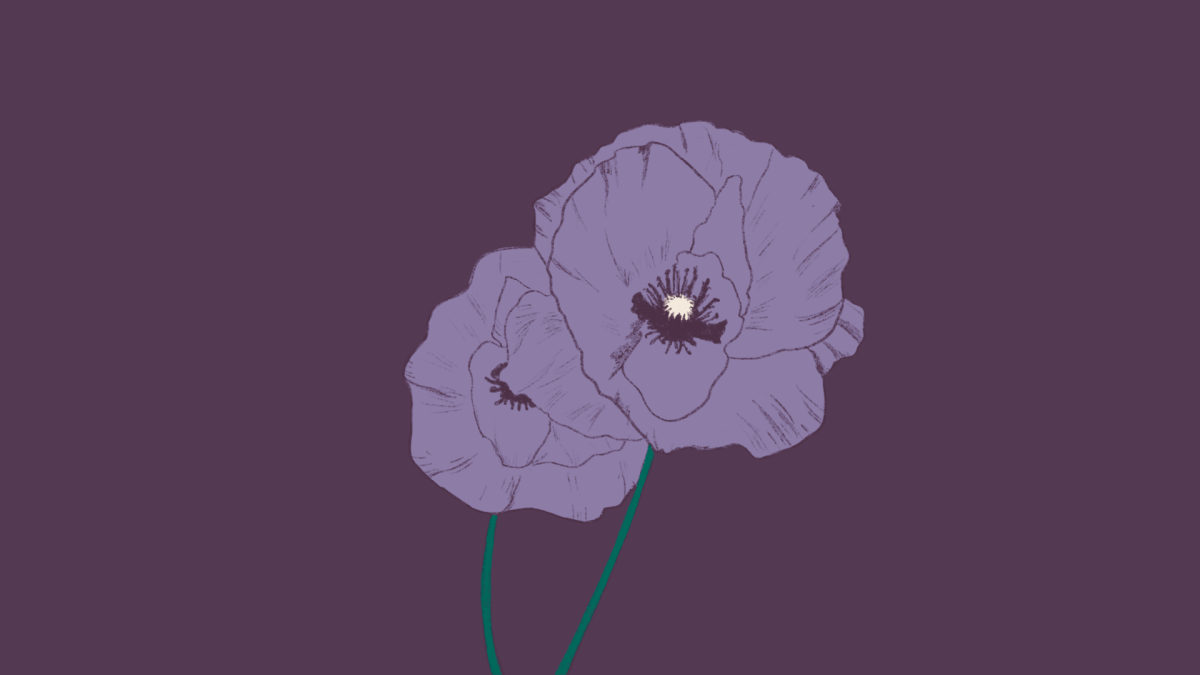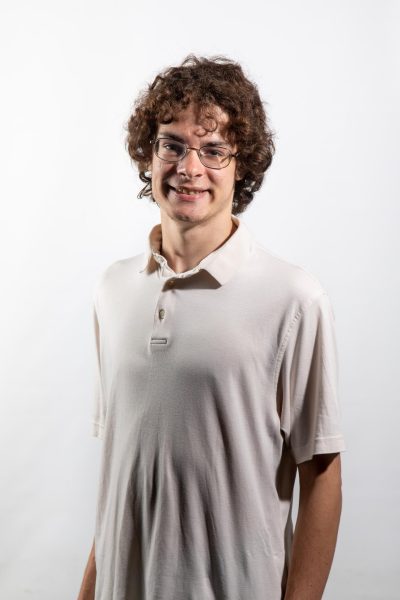Shaun Schroth is American University’s assistant director of photography and manager of photographic services. Through his work, Schroth hopes to maintain an inclusive community for students.
Shaun Schroth always aspired to be an artist, but not a photographer. He took a photo class in high school, but he didn’t see the gratification involved in the medium, he said — he left unconvinced the camera was meant for him. It wasn’t until he began to experiment with photography more closely that he developed a passion for it.
Schroth has since pursued a career in photography and works today as American University’s assistant director of photography and manager of photographic services. At AU, he has developed a community of volunteers in the photography labs that is considered unique by those who work for him. He also works as a freelance photographer in Washington.
While studying graphic design in high school, Schroth had to learn the artistic rudiments by hand. The classroom had computers, but they were considered tools and were off-limits to students until they knew exactly what they were doing.
Schroth came to enjoy the creative process involved in design work, which he described as “iterative.” He said designing allowed him to create work he felt was meaningful and representative of himself. At the time, Schroth said, he thought photography just couldn’t accomplish this in the same way.
“Drawing, painting, sculpture, illustration, things of that nature were more my wheelhouse, and photos seemed kind of just like this, ‘Okay, like, you’re just taking pictures of the real world,’” Schroth said.
When he graduated from high school with a certificate in graphic design, he spent a few years working as a freelance designer and commissioning art pieces in his hometown of Elkhart, Indiana. He said he found extra income managing a kitchen for a local Mexican food chain and constructing RVs.
Schroth moved to the Washington area and, in 2006, enrolled in the now-defunct Art Institute of Washington, where he studied video production.
It was while pursuing his degree that he purchased his first digital camera. Schroth said he had grown weary of being the one person who picked up equipment for video shoots at school. Photography, on the other hand, appealed to him as a way to produce high-quality work without heavily relying on collaboration.
“There was this kind of photo solitary,” Schroth said. “That was the mindset that I had found myself in. I don’t have to worry about people showing up or being professional.”
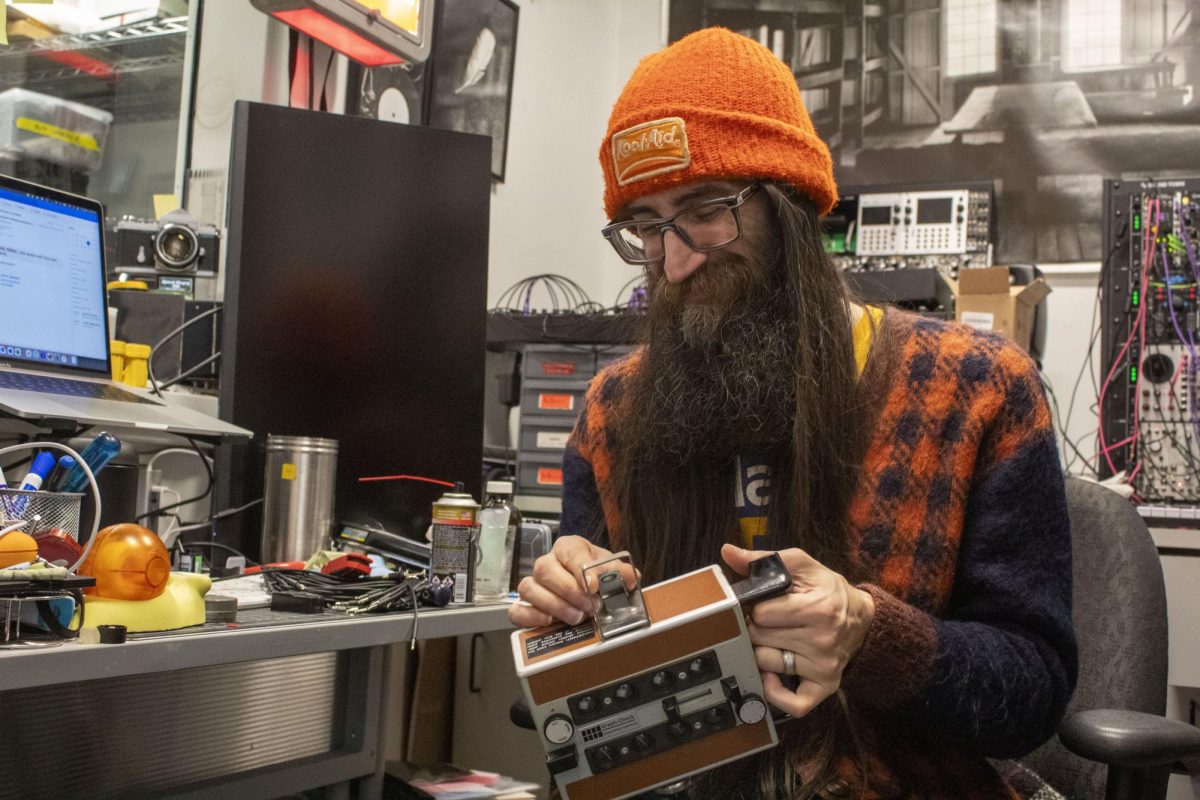
Though Schroth said working alone had initially connected him to the medium, he later found that hair stylists, makeup artists and models can all contribute to a photo shoot — and show up on time. But there was more that drew him to the craft.
“I gravitated towards the medium itself and what you can do with it and how much kind of history it has and all of the different things that you can learn within it,” he said.
After graduating from the institute, Schroth began to find a specific outlet for his work while enrolled at the University of the District of Columbia, where he would earn a bachelor’s degree in photography in 2013 and a master’s degree in secondary education in 2014.
Schroth created the UDC Photography Club and served as its president, curating an exhibition every year. These shows would run in conjunction with the annual photography festival organized by nonprofit photography association FotoWeek DC in the city each November. They gave him an opportunity to display work alongside the students and faculty of local schools, among them AU Director of the Photography BA Program Leena Jayaswal.
After graduating UDC, Schroth freelanced and ran a tintype portrait studio, he said. One day in 2015, the phone rang. It was Jayaswal, calling to offer the position of lab manager at AU.
Jayaswal said in an interview the position has existed since 1994, when she was a student at AU. It was created specifically for her, and graduate students had usually filled the position since. Schroth said he knew nearly every person who had held the position but noted one thing they all had in common.
“They just ran things like it always ran,” Schroth said. “I was that kind of person that was an outsider’s perspective on what we can do differently. And I think that’s a big part of why Leena contacted me.”
This upcoming fall semester will mark Schroth’s 10-year anniversary of the job, he said. Over the last decade, Schroth said he has overseen the photography facilities and managed a roster of student volunteers. When Schroth started in 2015, there were only 10 students who were offering their services. He said he got the impression of a clique.
The first thing he set out to do was to create a community where every student felt welcome. By creating a space where everybody could bring something unique to the table, Schroth said he turned the labs from a niche aspect of campus to a well-recognized community.
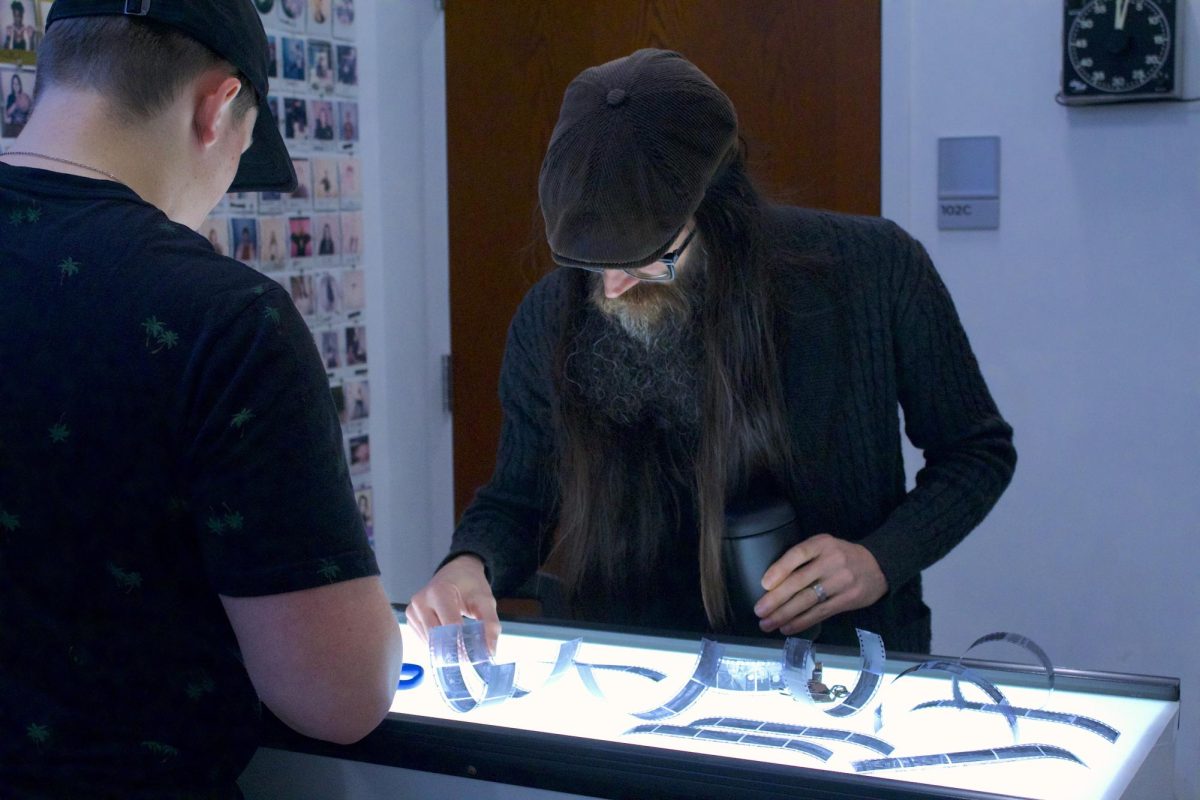
“It’s probably one of the most talked about communities on campus because it’s recognized, like how much students enjoy being in the space and the things that they learn and didn’t expect to learn,” Schroth said.
Today, 36 students work in the photo labs. Two are paid. Schroth said it’s the program’s largest cohort since he started in the lab.
“I will say that it’s probably too many, but they all want to be here,” Schroth said. “They all enjoy being here, and they all bring something unique to the space.”
Throughout his tenure, many people have asked Schroth for a lab position, he said, and he has only rejected two of them.
Schorth said he believes that the reason for such a large staff is the ability for people to be themselves in the lab.
Grace Chen, a senior and a teaching assistant in Jayaswal’s Principles of Photography class, said Jayaswal recommended Schroth give her a position in the labs after taking the course. She volunteers in the labs currently and said Schroth has developed an atmosphere that flows naturally and is easy to work in.
“You walk in the door and immediately you get pulled into some project,” Chen said. “It’s always a good time here.”
Schroth said paid staff members work weekends and are adept at every aspect of managing the space. The 34 volunteers work 2.5-hour shifts each week. But all of them have an important role in managing the space, he said.
Schroth said the photo lab is a space where employees can experiment in unique ways, like testing a new chemical process or hanging a disco ball in the film processing room.
“We can be loud,” Schroth said. “We can be disruptive because a lot of these rooms are soundproof. We can be a bit obnoxious, but we can just do our own thing.”
Amanda Deluzio, a senior photography major, said Jayaswal also recommended Schroth take her on after taking History of Photography. Deluzio said she believes Schroth is the core of the photo lab’s community.
“Shaun plays a significant role, if not the biggest role, in forging that community, because Shaun really works to learn our specific interests and kind of bridges that to connect us all,” she said.
When Schroth learned of Deluzio’s interest in musical synthesizers, he let her rent his personal equipment. The two have subsequently spent several hours in the mounting room making electronic music together, according to Deluzio.
In 2019, Schroth became the assistant director of photography on top of his role as lab manager. He said he believes he got the job because he redeveloped the photo lab community. As assistant director, Schroth said he works with Jayaswal to administer the operation of the photography program at AU, overseeing instructors and assuring they have the successful course.
Although Schroth is labeled an assistant, Jayaswal said she sees him as a partner in managing the program.
“If there is something that is coming up, I will always ask Shaun his opinion, and vice versa if there’s something that comes across his plate,” Jayaswal said. “We always check in with each other. We’re very much a team, and we wouldn’t think of working any other way.”
Schroth has also had a say in administrative decisions pertaining to the photography program. He was involved in the initial layouts for the 2019 renovation of the Media Production Center, assuring that there was plenty of adequate space for teaching — something he said Mary Graydon Center, where the program was previously held, lacked.
Teaching is a longtime passion of Schroth’s. He said his path to teaching was shaped by an unexpected moment during his time at AIW, when he was working at a tattoo shop.
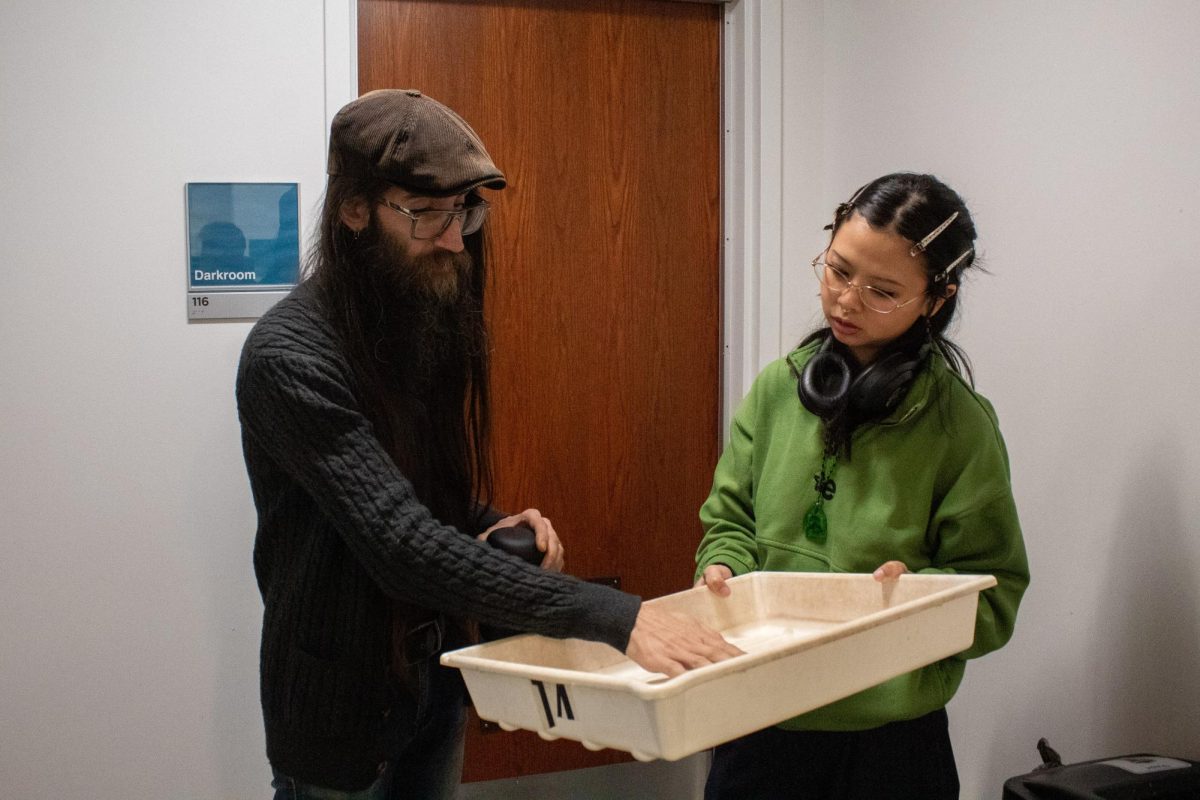
While studying at the Art Institute of Washington, Schroth worked at a tattoo shop and once struck up a conversation with an artist working on a tattoo for a hip-hop musician incorporating niche elements of hip-hop culture. The two got to talking and Schroth provided some suggestions on what could be added, each in detail. His colleague, impressed at the level of detail in his explanations, suggested that Schroth should go into teaching, which Schroth said led to him study secondary education at UDC.
Over his decade at AU, Schroth said he taught multiple Photography Department courses at each skill level. Following his promotion to assistant director, he now teaches one course per semester. He said he is neither a full-time nor adjunct faculty member — he is a staff member with a faculty appointment.
Though the courses Schroth teaches usually rotate, his favorite and most frequent is Principles of Photography. It’s an introduction to the technical and artistic aspects of the field, Schroth said, so teaching the course enables him to watch students grow and develop a passion for the field.
“As much fun as it is to do the more advanced and intermediate courses, there’s something that just can’t be beat by starting at nothing and seeing where people go and how much they improve, whether they love it at the end, kind of like it at the end, or are still just as nonplus as they were on day one,” Schroth said.
Jayaswal said the success of the program and the collaboration between students and faculty within is largely due to Schroth and the effort he puts into making the program the best it can be.
“This environment that we have helped foster and create is dependent on the students and who they are,” Jayaswal said. “But really, Shaun is the leader in that. He always, constantly, goes above and beyond to help create his community.”
This article was originally published in Issue 36 of AWOL’s magazine on April 15, 2025. You can see the rest of the issue here.
Editing by Stella Camerlengo, Ben Austin, Will Sytsma, Ava Ramsdale, Julia Cucchiara, Bailey Bish, Kalie Walker, Caleb Ogilvie, Grace Hagerman and Alexia Partouche.
